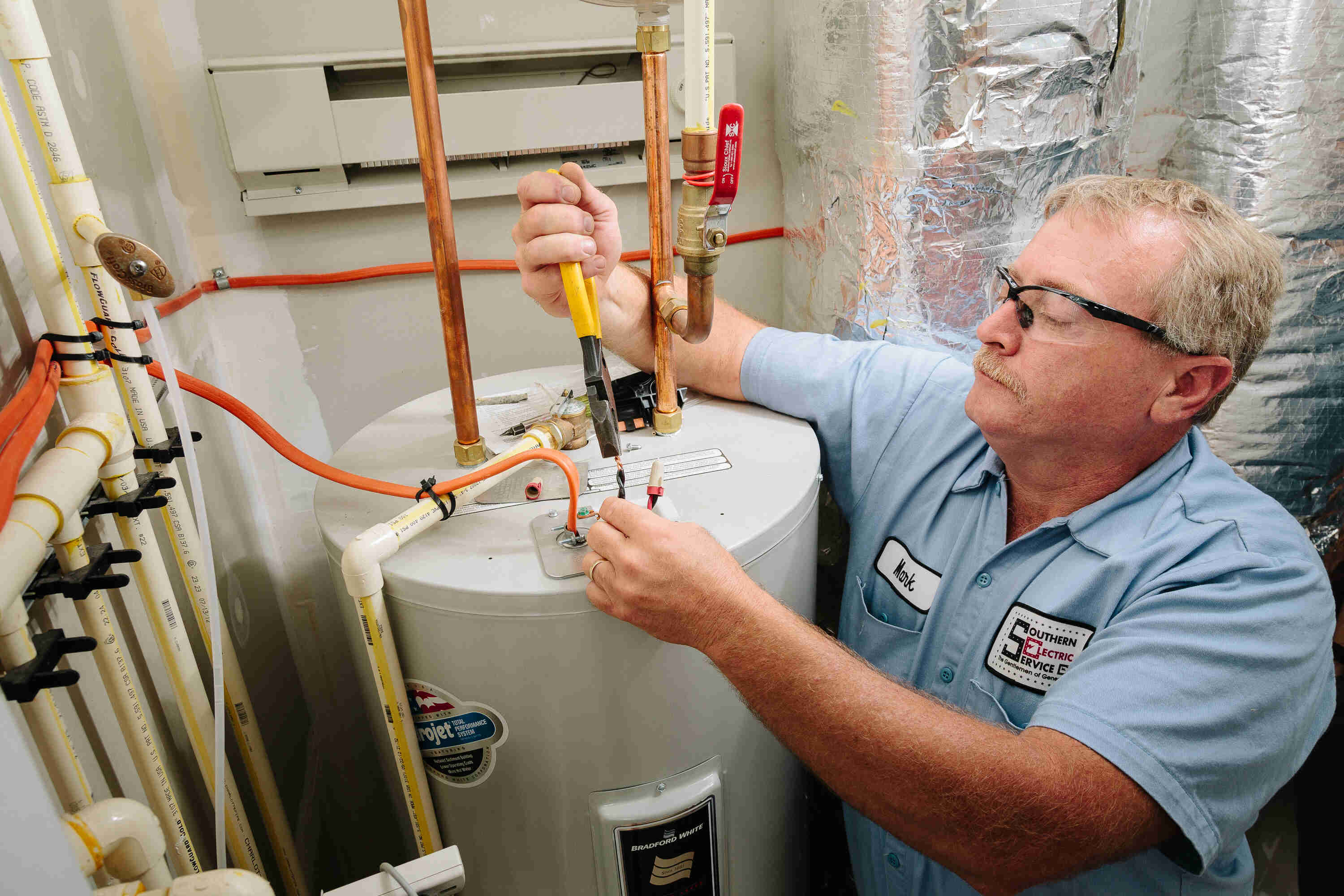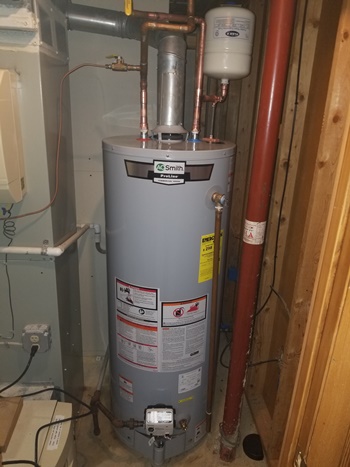They are making several great observations about How to Maintain a Hot Water Heater in a Few Simple Steps in general in this post which follows.

Hot water is necessary for everyday comfort, whether it's for a refreshing shower or washing recipes. To ensure your warm water system runs effectively and lasts longer, routine upkeep is key. This post gives practical suggestions and insights on just how to keep your home's hot water system to stay clear of disturbances and pricey fixings.
Intro
Maintaining your home's hot water system could seem overwhelming, yet with a couple of simple steps, you can ensure it operates smoothly for years to find. This guide covers whatever from recognizing your warm water system to DIY upkeep ideas and knowing when to employ professional help.
Relevance of Preserving Your Hot Water System
Regular upkeep not only extends the life expectancy of your warm water system but additionally guarantees it runs effectively. Ignoring upkeep can bring about reduced efficiency, higher energy bills, and even premature failure of the system.
Indications Your Warm Water System Demands Upkeep
Understanding when your hot water system requires interest can stop major problems. Watch out for indicators such as inconsistent water temperature, unusual noises from the heating system, or rustic water.
Recognizing Your Hot Water System
Prior to diving right into upkeep jobs, it's valuable to understand the standard components of your hot water system. Typically, this consists of the water heater itself, pipes, anode rods, and temperature level controls.
Month-to-month Upkeep Tasks
Routine regular monthly checks can help capture small problems before they escalate.
Flushing the Water Heater
Flushing your hot water heater eliminates sediment buildup, boosting performance and prolonging its life.
Checking and Replacing Anode Rods
Anode rods avoid rust inside the container. Checking and changing them when worn is important.
Inspecting and Adjusting Temperature Settings
Readjusting the temperature level setups ensures optimum performance and safety and security.
DIY Tips for Maintenance
You can execute numerous maintenance tasks on your own to maintain your hot water system in leading condition.
Checking for Leakages
Routinely inspect pipes and connections for leakages, as these can cause water damages and higher expenses.
Checking Pressure Relief Valves
Testing the pressure safety valve ensures it works appropriately and prevents excessive stress buildup.
Protecting Pipes
Protecting hot water pipelines minimizes warmth loss and can conserve energy.
When to Call a Professional
While do it yourself upkeep is advantageous, some problems require professional proficiency.
Complex Problems Requiring Expert Aid
Examples consist of significant leaks, electrical problems, or if your hot water heater is regularly underperforming.
Regular Professional Maintenance Benefits
Professional upkeep can include extensive assessments, tune-ups, and guaranteeing compliance with safety criteria.
Conclusion
Normal upkeep of your home's hot water system is crucial for effectiveness, durability, and cost financial savings. By following these suggestions and knowing when to seek professional assistance, you can make sure a reliable supply of warm water without unexpected disruptions.
Water Heater Maintenance: The Basics
Maintaining your water heater will ensure it operates efficiently and has a longer lifespan. Neglecting regular maintenance can lead to costly repairs and an even bigger chunk of your savings if you have to replace it sooner than necessary. But there’s good news: Most water heater maintenance tasks are relatively simple and easy for homeowners with basic DIY skills.
Flush the Water Heater
Over time, sediment and minerals can build up in the tank, reducing its efficiency and potentially causing damage. To flush the tank, turn off the power or gas supply, attach a hose to the drain valve near the bottom and open the valve to drain the water until it runs clear. Ideally, flush the tank annually.
Replace the Anode Rod
The anode rod is a sacrificial metal rod that helps prevent corrosion inside the tank. Inspect and replace it every three to five years or per the manufacturer's recommendation. To replace the anode rod, turn off the power or gas supply, drain a few gallons of water from the tank, unscrew the old rod and replace it with a new one. If the anode rod is significantly corroded or covered in calcium buildup, it's a sign the water heater may need to be replaced soon.
Tune-Up
A yearly tune-up can help identify potential issues and ensure your water heater operates at peak efficiency. This typically involves checking the thermostat, burner assembly (for gas heaters) and any other components specified by the manufacturer. During a tune-up, the technician may also clean the burner and adjust the pilot light (for gas heaters) or examine the heating elements (for electric heaters).
How to Maintain Your Water Heater
Insulate the tank. Insulating the tank can improve energy efficiency and reduce heat loss, saving you money on energy bills. You can purchase precut insulation blankets designed specifically for water heaters or use standard fiberglass insulation wrapped securely around the tank. Check the temperature. The recommended water temperature for most households is around 120 degrees Fahrenheit (49 degrees Celsius). Higher temperatures can increase energy costs and potentially cause scalding. Use a kitchen thermometer to check the temperature at the faucet nearest the water heater. Monitor water pressure. Excessive water pressure can strain the water heater and cause leaks or even tank failure. Install a pressure-reducing valve if necessary. The ideal water pressure range is between 60 and 70 PSI (pounds per square inch). Test the temperature and pressure (T&P) relief valve. The T&P relief valve is a safety feature that releases pressure if the tank gets too hot or the pressure builds up too high. Test it annually by lifting the lever and allowing a small amount of water to release. Replace the valve if it doesn't release water or reseal properly. Check for leaks. Regularly inspect the tank, pipes and fittings for leaks or corrosion. Deal with issues promptly to prevent further damage. Even a small leak can lead to significant water damage over time. Consider a tankless water heater. If your traditional tank-style water heater is nearing the end of its lifespan ( typically 10 years), consider replacing it with a tankless water heater. These units heat water on demand, reducing standby energy losses and potentially saving you money on your energy bills. Schedule professional maintenance. While homeowners can perform many water heater maintenance tasks, it's still a good idea to schedule professional maintenance every few years. A plumber or HVAC technician can thoroughly inspect the unit, identify potential issues and ensure it operates safely and efficiently. https://www.homeserve.com/en-us/blog/home-improvement/hot-water-heater-maintanence/

Hopefully you enjoyed our piece on What Kind of Maintenance Do Water Heaters Need?. Thanks for spending some time to read our short article. Are you aware of anybody else who is in the market for the niche? Do not hesitate to promote it. Thanks so much for going through it.
Click Here